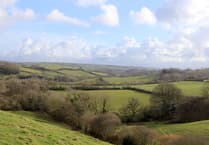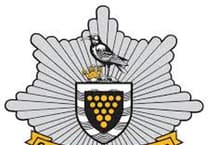VISITORS to Trebarwith, and in particular the picturesque Port William Hotel, might be forgiven for thinking that their favourite seaside location had always been such a perfect escape from the outside world.
However, researchers working for the pub’s owner, St Austell Brewery, have been busy unearthing a very different history involving industrial ventures and Victorian institutes linked to the site, and now they’re calling out to locals to help them piece together the history of one of Trebarwith Strand’s most enduring landmarks.
While the pub has been a public house since some time in the 1950s, research suggests that it had been run as a private members’ club before that time, to avoid the vagaries of the local licensing authorities.
However, the long-term history of the building is what St Austell Brewery would like to unearth, according to company archivist Chris Knight, who is putting out the appeal for information.
Chris said: “We know that the building was used as a commercial base for the local slate mining ventures on the cliff, but we have no real evidence of when it was built and whether it had any other uses before becoming a pub, so we’d love to hear from anyone with connections to the pub or the area in general who might be able to help us fill in the gaps.”
Early photographs of the path leading up from the pub clearly show the old wooden hoist that would have been used to lift slate cuttings up from the cliff face for working in the old Port William building, while other memories already dredged up recall coal vessels pulling up in Port William bay at high tide to drop coal bags off on the path cut into the cliff, before retreating to the other side of the strand to pick up their cargoes of slate.
Trebarwith at the turn of the 20th century had seen a meteoric rise in visitors due to the arrival of the railway to nearby Delabole in the 1890s. Weekend visitors from town and out of county arrived in droves, poems were written about the beauty of the location and even local institutions such as the Bible Christian Circuit and the Camelford Workhouse used Trebarwith as a regular destination for their tea parties and inmate outings respectively.
A local newspaper source from the time describes the children from the workhouse being delivered to the strand by hearse — all of the other available vehicles having already been booked by other visitors from the towns — while the Cornwall and Devon Post in 1925 declared, ‘never before have so many people been noted going through the City of Slate in almost every conceivable kind of conveyance’ as they made their way down to Trebarwith on the August bank holiday.
From the earliest days of turnpike roads, Trebarwith had its own toll road linked to the main Cornish routes further inland, testament to a very lucrative local economy based on the many slate workings, not to mention the famous sand business run by the Lobb family on the strand, providing an excellent fertiliser to farmers far and wide across North Cornwall, transported by their much loved chain of donkeys.
However, there are still many mysteries that surround the site, and, despite the many archaeological remains in the area, there is very little written evidence to help create a full history of the Port William and its surroundings.
Chris said: “While we are not looking so very far back in relative terms, local history has a real habit of disappearing very, very quickly unless it is written down or passed down by those who lived through it. I’m really hoping that someone will be able to come forward with their memories of the old place and help us to give it back its true past.”
If anyone thinks they can help fill in the gaps, or if they know anyone who might have memories or images of the early days of Trebarwith Strand, and, in particular, the Port William Hotel building, contact Chris and the team on [email protected]




